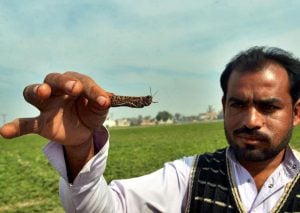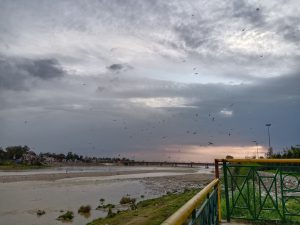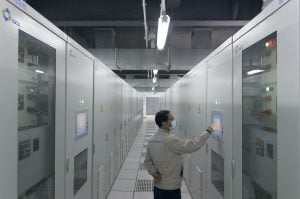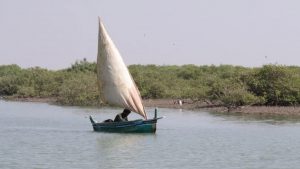The Covid-19 pandemic is not only an unprecedented worldwide public health emergency but also an economic crisis. Rich industrialised countries have been somewhat successful in supporting their economies with massive and bold stimulus packages, but that luxury is not available to a large number of developing economies and emerging markets.
This will have a direct impact on the pursuit of the Sustainable Development Goals (SDG) that the world pledged to in 2015, as most of the people who need to climb out of poverty live in developing countries. The UN had declared 2020-2030 as the ‘Decade of Action’, but the pandemic might undermine this. Though it is supposed to bring countries together to cooperate with one another and to strive for sustainable global development, that is yet to be seen. At the same time the fear of global economic recession has raised serious questions over the future implementation of the SDGs.
The SDGs constitute 17 main goals, most of them interconnected, but the fate of SDG 6, to “Ensure Availability and Sustainable Management of Water and Sanitation for All” is critical. Improved access to water and sanitation contributes significantly to economic development, poverty reduction, education, and – most importantly at this point of time – health. To forestall Covid-19 infection, the most common and important advice for everyone is to wash hands more frequently, for at least 20 seconds each time. However, as the SDG website notes, “In 2017, some 60% of people worldwide and only 38% in least developed countries had a basic handwashing facility with soap and water at home, leaving an estimated 3 billion people without basic handwashing facilities at home.”
While the pandemic could be the spur needed to for the world to actively pursue SDGs, the history of the implementation of these initiatives does not augur well.
SDG 6.1
The aim of SDG 6.1 was to achieve universal and equitable access to safe and affordable drinking water for all by 2030. While this is a difficult target, the growing importance of public health due to Covid-19 may encourage governments to prioritise the supply of clean water to their citizens. Due to the pandemic there has been an immediate increase of assistance from international organisations like WHO, UNICEF, UN-Water and Red Cross and Red Crescent to less developed countries towards better water supplies and access. There is also a possibility that countries might themselves reallocate their internal resources to increase and improve the supply of safe water.
Offsetting this hope, there is the fear that in the post-Covid-19 period, the rush towards maintaining food security might force countries to allocate more water to the agricultural sector, and the state of the economy might push countries to increase water prices.
SDG 6.2
SDG 6.2 focuses on sanitation and hygiene for all and to end open defecation. There has been improvement, according to the UN. “Between 2000 and 2017, the proportion lacking even a basic sanitation service decreased from 44% to 27%, yet 701 million people still practised open defecation in 2017.” Though there is no study yet which confirms the link between Covid-19 and sanitation, the increased emphasis of countries on health and hygiene and increasing water supply may contribute to improved sanitation and reduce open defecation. However, due to the lack of any evidence of coronavirus transmission through sewage or through the oral-faecal route, countries may focus their spending more on water access and supply and less on sanitation and building toilets.
SDG 6.3
SDG 6.3 aims at improving water quality by reducing pollution and treating wastewater. The possible presence of coronavirus in the wastewater/sewage system can possibly bring the focus of authorities to address the untreated wastewater issue and encourage them to take measures for increasing reuse and safe reuse. At the time of the Covid-19 crisis and lockdowns, there has been less pollution of water and dumping of waste due to reduced industrial and economic activities. However, after the present crisis recedes, countries might increase their industrial production to rapidly restart their economies, and also extract more mineral resources leading to further pollution of water.
SDG 6.4
SDG 6.4 asks for water use efficiency and sustainable water withdrawals in order to address water scarcity. The Covid-19 crisis can possibly encourage countries to reallocate water resources more for household uses and that may push them to ensure efficient use of water in other sectors. However, the need for more water urgently after the crisis for increasing food production and industrial use to face a looming food scarcity and economic crisis might pose challenges for countries in reducing the number of people who are facing water scarcity. The need for more water may force governments to overlook the sustainability of water withdrawal.
SDG 6.5
SDG 6.5 strives to implement integrated water resources management (IWRM) at all levels, even in transboundary water systems. IWRM is needed for the best possible use of water resources for the economy, society, and ecosystem. The Covid-19 pandemic highlights the need for improved water access and supply and the post-pandemic need for economic revival and food security will demand more water than usual. Taken together this could encourage countries to adopt an IWRM approach.
However, while there will be more focus by the countries on using water for economy and society, the ecosystem may get overlooked, effectively negating the IWRM approach. Moreover, transboundary cooperation over freshwater systems (both surface and groundwater) has only been done well in a small number of cases. As the SDG website notes, “from 67 of 153 countries that share transboundary waters, the average percentage of national transboundary basins covered by an operational arrangement was 59% in the period 2017–2018, with only 17 countries reporting that all their transboundary basins were covered by such arrangements.”
The threat of climate change was expected to push riparian countries to adopt a more cooperative approach, but that has not been the case. Thus there is no surety that the Covid-19 crisis will lead to changes in the traditionally independent and nation-centric approach of water management adopted by governments.
SDG 6.6
Finally, SDG 6.6 was committed to protect and restore water-related ecosystems by this year (2020). There has been some progress on this goal but it was far from being achieved in the current year. Instead, the destruction of ecosystems has accelerated, particularly the conversion of forest land to agricultural land. This is being seen as a reason for the increasing number of pandemics like Covid-19 in recent years. Now, governments are expected to protect ecosystems, including water-related ecosystems. Instead, the rush to get economic growth back on track in the post-Covid-19 period is more likely to instigate countries to exploit more of their natural resources, destroying ecosystems further in the process.
While the pandemic could be the spur needed to for the world to actively pursue SDGs, the history of the implementation of these initiatives does not augur well. The international community needs to provide more financial and technical support and increased knowledge transfer to aid developing countries fulfil their SDGs on water and sanitation for all. Developing countries also need to be assisted with improved policymaking for taking into account the social cost-benefit approach while pricing water, strengthening environmental laws and establishing ecosystem-centric regimes, and making technology available to them for better and efficient food and industrial production.
On March 31, 2020, the UN Secretary General announced the establishment of a Covid-19 Response and Recovery Fund. This multi-donor trust fund aims to raise USD 1 billion this year and one of the aims is to safeguard the SDG programmes from Covid-19-induced setbacks. It has also called for a USD 2.5 trillion coronavirus crisis package for developing countries. This is a good start but there is a lot more to be done by international organisations and industrialised rich countries to enable the developing countries to achieve their SDGs, particularly in the areas of water and sanitation for all.
Also see: India should learn sanitation from Bangladesh.
Also see: Opinion: Pakistan meets climate SDG, but that is not enough.
![<p>Antonio Guterres, the UN Secretary General, has called for a fund to help developing countries deal with the impact of the pandemic [image by: Dean Calma / IAEA / Flickr]</p>](https://dialogue.earth/content/uploads/2020/04/Antonio-Guterres-the-UN-Secretary-General-scaled.jpg)








